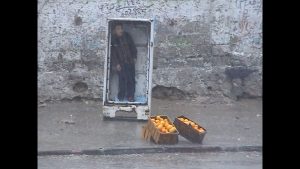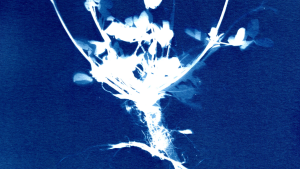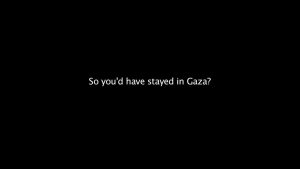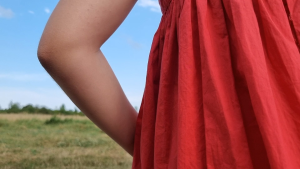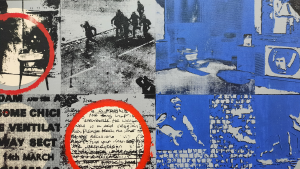It should always be kept in mind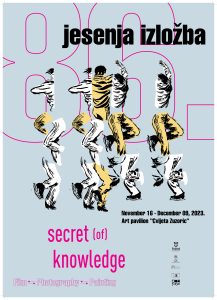
that a huge part of the film
is located on the sticker,
A connection between two frames
which is not visible in the projection.
There is more in such compounds
kinesthetic charge but in the frames of the film.
Film frames from both sides can
be photos too.
Ivan Martinac
architect, film director, screenwriter, editor, cinema amateur, holder of the title „Master of Amateur Film of Yugoslavia“
The 86th ULUS Autumn exhibition TAJNĀ ZNÁNJA ( Secret (of) Knowledge) Film ⇆ Photography ⇆ Painting aims to explore the secret connections and inspirations between the art forms of film, photography, and painting, through the lens of indisciplinarity and the display of deliberate and accidental crossing references between works. The exhibition also investigates the effects of bringing together different understandings of the „knowledge of art“, where the influences of amateur (passionate) experimentations fulfill a major role.
The interconnectedness of different indisciplines (Jacques Rancière) with art as form of interdisciplinary knowledge forge a tool for emancipation and gives rise to a condition for what Rancière calls the „poetics of knowledge“ which refers to the practices of a way of thinking that rejects the specialisation of fields, objects, and methods (expertise), including the separation between types of intelligence, assuming equality.
„The poetics of knowledge affirms that there is a faculty of thought that does not belong to any particular group, a faculty that can be attributed to any speaking, thinking being.“ (Jacques Rancière, Method of equality – poetics and politics, 2015). This approach to knowledge favours doing the things we love, doing it out of love (amato) and for this reason revives the view of amateur experimentation with technique (and not only with it), and departs from the strict framework of expertise as a prerequisite for emancipation, subjective access to knowledge and the liberation of man from constraints of the dominant discourse as well as the conditions arising from it.
The exhibition will present the works of over 50 artists from Serbia and abroad. It gathers together selected works from an open call for ULUS’s artists who answered with their works on the proposed topics, as well as invited artists chosen by the curatorial team. The theme of indisciplinarity leads to see the web of relations beyond disciplinary restrictions as well as national boundaries. At the time of several wars on planet Earth, the intention is to look for currents of peace while actively working on the peace that such indisciplinary and impossible connections could produce within art.
A postulate of this exhibition is as follows: indisciplinary migrations hold the capacity to connect territories of knowledge/knowing that at first glance seem distant, but which can be integrated through amateur practices that acknowledge the porosity of the lover, and not the programmatic ethos of the professional. By connecting knowledges and practices and turning them upside down, the displacement of established places of speech and thought can improve the existing system of values in the common world – This contributes to changing the dominant system through micro reconfigurations and transformations, above all by shaking the widespread and prevailing concept of expertise, expert knowledge and narrow hyper-specializations that always start from the axiom of separation and omnipresent moralization. There are those who know (all) and in the name of that deliver instructions and directions and those who, due to assumed ignorance, fulfill tasks and visions of presumed “know-it-all”. This division maintains the status quo, its separation and limitations in an already divided world necessarily seeking a way out towards a liberated relationship to knowledge, the inclusion of art in the family of knowledge, and the emancipatory return to the amateur relation to the knowledge to which this exhibition hopefully contributes a modest part.
The exhibition concept is the result of the collaboration between the Art Council of ULUS and an international team of curators gathered around the international platform for aesthetic experimentation and education for all, PhD In One Night, / Laboratory of Radical Peace in Les Orangeries de Bierbais presented by Ivana Momčilović, Kaya Erdinç and Elisabetta Cuccaro. Contributions to the development of the exhibition concept were also made by theorist of amateur and experimental film and author Petra Belc.
Due to the long-standing unresolved status regarding the use of the „Cvijeta Zuzorić“ Art Pavilion, ULUS has been protesting since November 17. In relation to the development of events, there may be changes in the program. For further information, follow the announcements on the ULUS website.
The exhibition will be open until December 9 with the works of:
Marjan Andrejević, Boško Atanacković, Erna Banovac, Taysir Batniji, Kristina Bajilo, Milica Crnobrnja Vukadinović, Elisabetta Cuccaro, Jelica Ćulafić, Vukašin Delević, Dejan Došljak, Srđan Dragojević, Kaya Erdinç, Petar Gajić, Tatjana Ivančić, Ljubomir Jakić, Nenad Jeremić, Divna Jovanović, Frank Keizer, Marija Kućan, Ivana Kucina, Irena Kuzmanović, Jadran Krnajski, La Cinquième Couche, Xavier Löwenthal, Ivan Martinac, Griša Masnikosa, Erol Mintas, Aleksandar Mladenović Leka, Dominika Morariu, Miron Mutaović, Aljoša Ninković, Marinela Neralić, Đorđe Odanović, Ksenija Pantelić, Vesna Pavlović Pažđerski, Aleksandar Paunković, Bata Petrović, Dušan Popović, Tomica Radulović, Maja Rakočević Cvijanov, Sophie Ristelhueber, Ana Stanković, Vida Stanisavac, Milorad Stepanov, Sanja Solunac, Tatjana Strugar, Slobodan Šijan, Ljiljana Šunjevarić, Sarah Vanagt, Aleksandra Vidaković-Lazić, Slobodan Vračar.
The 86th autumn exhibition is realized with the support of the Ministry of Culture of the Republic of Serbia, the Secretariat for Culture of the City of Belgrade and in partnership with the Museum of Applied Arts.
Exhibition poster’s visual author: Xavier Löwenthal in collaboration with Tijana Cvetković, in dialogue with David Hockney’s collage poster “Skater” for the poster of the 1984 Sarajevo Olympic Games.
